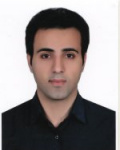| نویسندگان | روح اله میرزایی محمد آبادی,ندا روان خواه,سعید معصوم,انوار اسدی,آرمین سروشیان |
|---|
| نشریه | Environmental Geochemistry and Health |
|---|
| ضریب تاثیر (IF) | 4.2 |
|---|
| نوع مقاله | Full Paper |
|---|
| تاریخ انتشار | 2023-08-03 |
|---|
| رتبه نشریه | علمی - پژوهشی |
|---|
| نوع نشریه | الکترونیکی |
|---|
| کشور محل چاپ | ایران |
|---|
| نمایه نشریه | SCOPUS ,JCR |
|---|
چکیده مقاله
This study examines topsoil contamina-tion in Aran-o-Bidgol urban region of central Iran,
with a focus on potentially toxic elements (PTEs).
A total of 135 topsoil samples in diferent land types
were characterized, ranging from areas with agricul-tural farms, desert, industrial and residential activ-ity, and brick kilns. The average concentrations of
Cd, Pb, Cu, Ni, Cr, Co, Fe, Zn, and Mn were 0.72,
11.41, 14.82, 29.87, 51.13, 106.69, 8741.87, 48.59,
and 346.42 mg kg
−1
, respectively, which all exceed
the local background levels. The results reveal that
land use signifcantly afected PTE concentrations.
Cr, Co, Mn, and Fe concentrations in soils of residen-tial and brick kiln areas were especially high. In con-trast, concentrations of Cu, Ni, and Zn were higher
in agricultural and residential areas. Risk assessment analysis showed that the sum of toxic units for PTEs
for brick kilns (1.72), residential (1.82), and agricul-tural (1.79) areas exceeded those of other land types
and that Ni and Cr contributed the most to the high
toxic risk index values. Both carcinogenic and non-carcinogenic risk indices of PTEs in soils were within
an acceptable limit, except for the cancer risk of Ni
(3.52E−04) and Cr (3.00E−04) among children. The
spatial hazard index and carcinogenic health risk of
PTEs showed that samples from the southwestern
parts of the study area might pose signifcant health
problems to adults and children. This study demon-strates how combining diferent techniques can help
spatially characterize PTE accumulation and protect
populations at risk.
